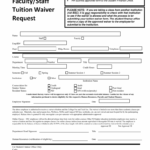My Story: How Partial Scholarships Opened Doors to My Dream Education (And They Can For You Too!)
I remember staring at the university brochures, my heart filled with a mix of excitement and a tiny knot of dread. The pictures were beautiful – grand libraries, bustling campuses, students laughing and learning. It was everything I dreamed of, a future I desperately wanted to build. But then my eyes would inevitably drift to the tuition fees, and that knot would tighten. My family wasn’t wealthy. A full ride seemed like a fantasy, and paying for it all myself felt utterly impossible.
"Maybe I should just forget it," I thought more than once. But a persistent voice inside me kept whispering, "Don’t give up. There has to be another way." And that, my friends, is when I stumbled upon the world of partial scholarships.
If you’re in a similar boat, feeling overwhelmed by the cost of education, please keep reading. I’m here to tell you my story, share what I learned, and hopefully, light a path for you.
What Exactly Is a Partial Scholarship? (And Why It’s a Game Changer)
Before I dive into my journey, let’s talk basics. When I first heard the word "scholarship," I pictured a magical fund that covered everything – tuition, housing, books, even pocket money. That’s a "full scholarship," and while they exist, they’re incredibly competitive and rare.
A partial scholarship, on the other hand, is exactly what it sounds like: a scholarship that covers part of your educational expenses. It might cover a percentage of your tuition, a specific amount each year, or just your books. It’s not a magic wand that makes all financial worries disappear, but trust me, it’s a powerful tool that can significantly reduce the burden.
Think of it like this: if a full scholarship is winning the lottery, a partial scholarship is finding a substantial treasure chest. It’s enough to make a real difference and bring your dream much closer. For me, it was the key that unlocked the door to my desired university.
The Hunt for Opportunities: Where to Look and How to Start
Once I understood what a partial scholarship was, my mission became clear: find them! This wasn’t a quick scroll on social media; it was a dedicated research project.
Here’s where I started looking, and where you should too:
- University Websites: This is your absolute first stop. Every university wants talented students, and many offer their own institutional scholarships, both full and partial.
- My Tip: Don’t just look at the main "Admissions" page. Dig deep into the "Financial Aid," "Scholarships," or "Funding" sections. Look for scholarships specific to your major, your country, or even your interests (e.g., a scholarship for students passionate about environmental science, or one for community volunteers).
- Scholarship Databases: There are many websites dedicated to listing scholarships from various organizations.
- My Tip: Be patient. Use specific keywords (e.g., "partial scholarship for international students," "undergraduate engineering scholarship," "scholarship for students from [Your Country]"). Create accounts, save your searches, and check regularly. Some popular ones include Fastweb, Scholarship.com, Chegg Scholarships, and even country-specific ones like those from EducationUSA.
- Government & Non-Profit Organizations: Many governments (both your home country’s and the host country’s) and non-profit foundations offer educational grants and scholarships.
- My Tip: Look for organizations related to your field of study, your cultural background, or your personal values. For example, if you’re interested in sustainable development, search for foundations focused on that area.
- Local Community & Professional Associations: Don’t overlook opportunities closer to home. Local businesses, community groups, and professional associations often have small scholarships for local students pursuing higher education.
- My Tip: These might be smaller amounts, but they add up! And often, there’s less competition.
This phase requires persistence. I spent hours sifting through websites, making lists, and filling out eligibility forms. It felt like a treasure hunt, and every potential lead was a glimmer of hope.
Crafting Your Winning Application: More Than Just Good Grades
Finding the scholarships was one thing; actually getting one was another. This is where the real work began, and I quickly learned that it’s about much more than just having good grades. While academic performance is important, partial scholarships often look for a well-rounded individual with passion, potential, and a compelling story.
Here’s what I focused on:
- The Personal Statement/Essay: Your Story Matters.
- This was my chance to show them who I was beyond my transcript. I didn’t just list my achievements; I wove them into a narrative. Why did I want to study this particular subject? What challenges had I overcome? How would this education help me achieve my goals and contribute to the world?
- My Tip: Be authentic. Let your personality shine through. Tell a story that only you can tell. Start early, write multiple drafts, and ask trusted friends or teachers to read it over for clarity and impact.
- Recommendation Letters: Choose Wisely.
- I asked teachers who knew me well, not just those who gave me good grades. I picked mentors who could speak to my character, my work ethic, and my potential, not just my test scores. I gave them plenty of notice and provided them with my resume and a brief summary of why I was applying for that specific scholarship.
- My Tip: Don’t just ask, "Can you write me a letter?" Ask, "Can you write me a strong letter of recommendation?"
- Highlighting Extracurricular Activities & Volunteer Work:
- Scholarship committees want to see that you’re an engaged individual. Whether it was volunteering at a local animal shelter, leading a school club, or participating in sports, I made sure to detail how these activities developed my skills and showed my commitment to something beyond myself.
- My Tip: Focus on the impact you made and what you learned from these experiences, not just what you did.
- Tailoring Each Application:
- This was crucial. I never sent a generic application. I meticulously read the scholarship criteria and made sure my essay and supporting documents directly addressed what they were looking for. If a scholarship was for leadership, I emphasized my leadership roles. If it was for academic excellence in science, I highlighted my science projects.
- My Tip: It takes more time, but it significantly increases your chances.
The application process was exhausting at times. There were moments of self-doubt, wondering if I was good enough, if it was all worth it. But I kept reminding myself of that dream, that beautiful campus, and the life I wanted to build.
The Waiting Game and The Sweet Taste of Success
After sending off what felt like dozens of applications, the hardest part began: waiting. It felt like an eternity. I checked my email constantly, my heart pounding with every new notification. There were rejections, of course. Those stung, but I tried not to let them deter me. Each "no" just meant I was one step closer to a "yes."
And then, one sunny afternoon, it arrived. An email with the subject line: "Scholarship Offer." My hands were shaking as I opened it. There it was: an offer for a partial scholarship covering a significant portion of my tuition! I reread it three times, just to be sure. Tears welled up in my eyes – tears of relief, joy, and profound gratitude.
It wasn’t a full scholarship, but it was enough. Enough to make my dream feel tangible, within reach. It was the push I needed, the affirmation that my hard work had paid off.
Living with a Partial Scholarship: Bridging the Gap
Getting the partial scholarship was a huge victory, but it wasn’t the end of my financial planning. I still had to figure out how to cover the rest – living expenses, books, travel, and the remaining tuition.
Here’s how I managed to bridge the gap:
- Strict Budgeting: This became my new best friend. I tracked every penny, prioritizing necessities and cutting back on luxuries. Eating out became a rare treat, and I learned to cook simple, affordable meals.
- Part-Time Job: I found a part-time job on campus that allowed me to earn some extra money without interfering too much with my studies. Many universities have student employment programs, and these are often flexible.
- Exploring Other Funding Sources: I looked into student loans (only taking what I absolutely needed) and applied for smaller grants that covered specific costs like textbooks or research materials.
- Family Support (If Available): My family, though not wealthy, was incredibly supportive. They contributed what they could, and I was immensely grateful for every little bit. We had open conversations about what was realistic.
- Smart Choices: I chose more affordable housing options, used public transport, and looked for used textbooks. Every small saving contributed to the bigger picture.
It wasn’t always easy. There were times I felt a bit stressed about money, especially compared to some friends who didn’t have to worry. But the partial scholarship was a constant reminder that I was here because of my effort, and that motivated me to make every penny and every moment count.
The Benefits Go Beyond Money: A Deeper Impact
Looking back, that partial scholarship did so much more than just reduce my tuition bill.
- It Boosted My Confidence: Receiving that scholarship was an incredible validation of my abilities and potential. It told me, "You are capable, and people believe in you."
- It Opened Doors: Without it, I simply wouldn’t have been able to attend my dream university. It gave me access to world-class education, incredible professors, and a diverse community of learners.
- It Fostered Gratitude & Responsibility: Knowing that I had been given this opportunity made me work even harder. I felt a deeper sense of responsibility to make the most of my education, not just for myself, but for those who had invested in my future.
- It Built My Network: Many scholarships come with opportunities to connect with the donors or other recipients, which can lead to invaluable mentorships and networking connections.
My Advice to You: Don’t Give Up!
If you’re reading this, feeling that same knot of dread I once did, please take these words to heart: Don’t give up on your dream education. Partial scholarships are real, they are achievable, and they can absolutely change your life.
Here’s what I want you to remember:
- Start Early, Research Thoroughly: The earlier you begin your search, the more opportunities you’ll find.
- Don’t Disqualify Yourself: Read the criteria carefully, but don’t assume you’re not good enough. Let the scholarship committee make that decision.
- Tell Your Story: Your unique experiences and aspirations are powerful. Don’t be afraid to share them authentically.
- Be Persistent: You will face rejections. It’s part of the process. Learn from each one, refine your approach, and keep applying.
- Every Little Bit Helps: A partial scholarship, even a small one, can be the missing piece of your financial puzzle. And remember, you can combine multiple partial scholarships!
- Manage Expectations & Plan Ahead: Understand what a partial scholarship covers and be prepared to budget and potentially seek other funding for the remaining costs.
My journey with partial scholarships wasn’t just about money; it was about believing in myself, working hard, and finding creative solutions to overcome obstacles. It taught me resilience and showed me that with determination, dreams can indeed come true.
So, go ahead. Start your own treasure hunt. Your dream education might be closer than you think. You’ve got this!



